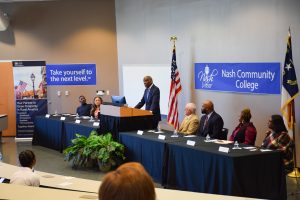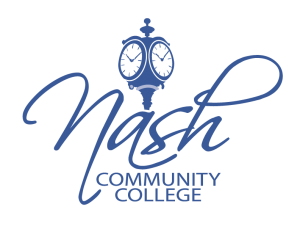Nash Community College Awarded USDA Grant for Digital Teaching & Learning
Nash Community College, Nash County Public Schools (NCPS) and the United States Department of Agriculture – Rural Development (USDA-RD) celebrated a grant award to improve the quality and accessibility of education provided to Southern Nash High School (SNHS) students during an event held at NCC today.
The USDA-RD grant is the Synchronous Distance Learning for Student Success. The amount of the award is around $348,000.
“This is an extensive investment into our community that will be most beneficial to the students,” said Dr. Lew K. Hunnicutt, president of NCC. “Once more, we are placing value on the impactful partnership between the community college and the public school system, which is crucial to what we all do.”
This investment supports a collaboration between Nash Community College and Nash County Public Schools to provide equitable access to real-time, immersive distance learning dual enrollment College and Career Promise courses to rural high school students in Nash County.
“This partnership will significantly enhance the educational landscape for our students and the firebird community,” said NCPS Superintendent Dr. Steve Ellis. “This initiative is more than just an advancement in our curriculum; it represents a commitment to equalizing access to educational opportunities, particularly for the southern end of Nash County.”
NCC will develop a hub site on campus and SNHS will select an end-user site for students. Students will be able to engage in real-time instruction from the assistance of high-quality video-conferencing technology.
“We are continuously developing new and innovative ways to take the quality of education we provide to the next level. We are responding to a specific need shared by real students that they don’t want online courses; they want face-to-face and in-the-moment instruction, similar to what they would receive in the classroom,” said Dr. Hunnicutt. “I am confident this will allow us to close the gap between our dual-enrollment courses (for high school students) and non-rural parts of the county.”
Initially this project will impact approximately 400 rural students and has the capacity to scale up to serve approximately 2,000 rural students (based on future project numbers).









